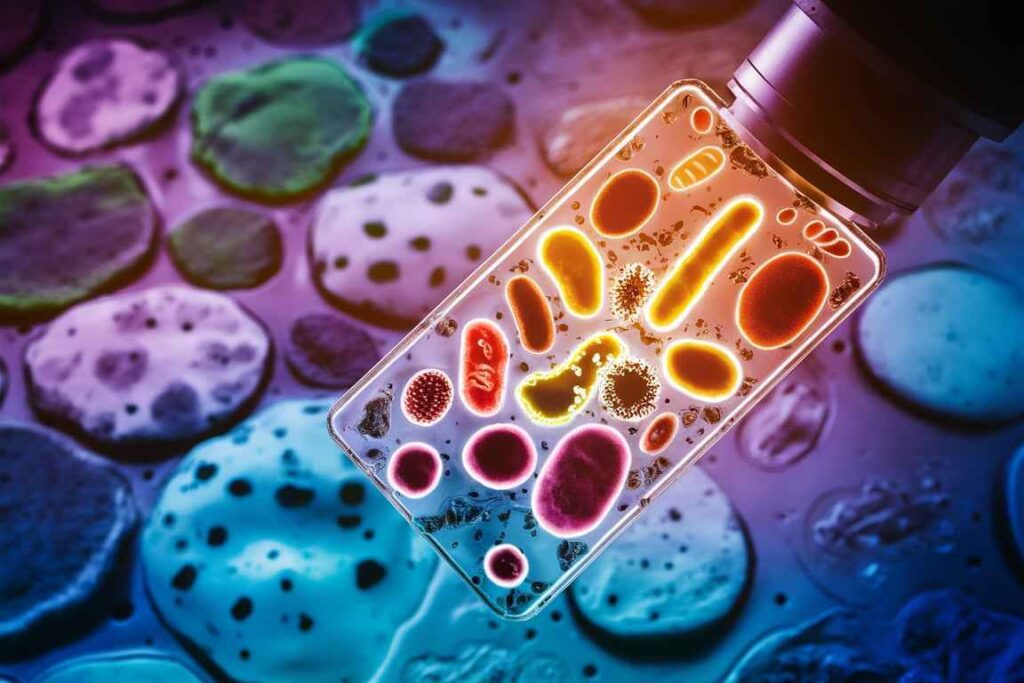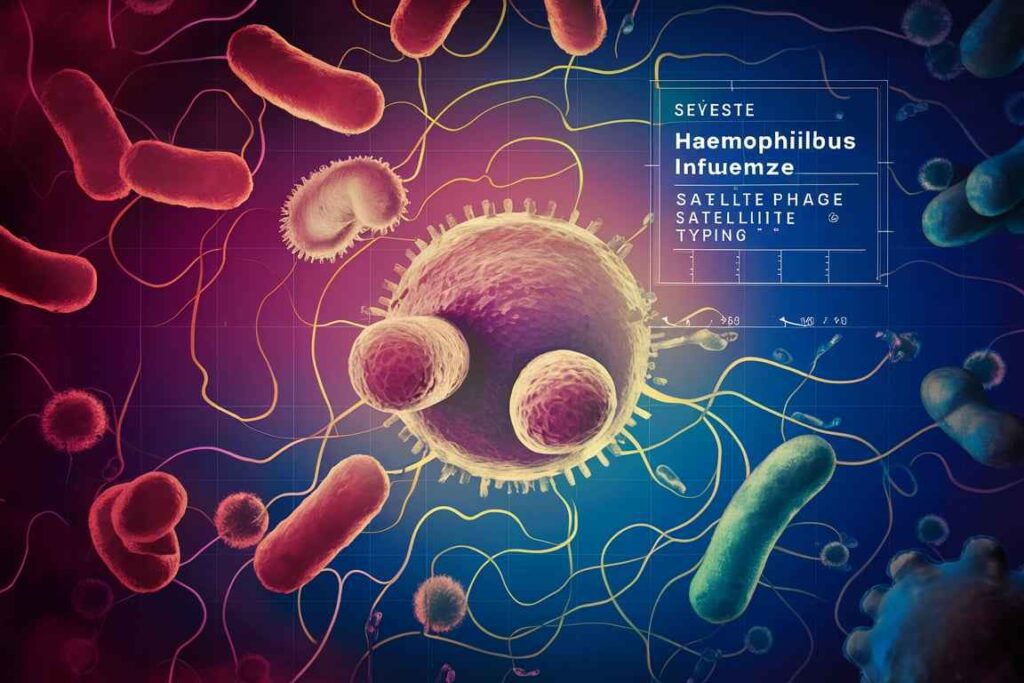Haemophilus influenzae requires both X factor (hemin) and V factor (NAD) for growth, which are not readily available in all growth media but can be produced by certain other bacteria.
Table of Contents
Haemophilus influenzae
Haemophilus influenzae is a small, pleomorphic, Gram-negative coccobacillus that is a significant human pathogen. It is part of the normal flora of the upper respiratory tract but can cause a range of invasive and non-invasive diseases, particularly in children and immunocompromised individuals.

Characteristics
- Gram-negative, non-motile, pleomorphic coccobacilli are the morphology.
- Growth Requirements: Fastidious in its growth requirements, requiring components X (hemin) and V (nicotinamide adenine dinucleotide). These conditions are met by chocolate agar, where it grows nicely.
- Capsule: Six serotypes (a through f) are used to categorize encapsulated strains, which are more virulent. Non-typeable Haemophilus influenzae (NTHi) strains are less invasive but nonetheless harmful because they are not encapsulated.
Diseases Caused
Numerous infections are caused by Haemophilus influenzae, including:
- Meningitis: Before extensive vaccination, especially in young children under five.
- Epiglottitis: An extremely serious and perhaps fatal illness.
- Otitis Media: Infections of the middle ear, particularly in children.
- Inflammation of the sinuses is called sinusitis.
- A lung infection is pneumonia.
- Bacteremia: A systemic infection caused by the presence of bacteria in the blood.
Laboratory Identification
1 Features of Culture:
- Chocolate Agar: Provides both X and V factors, which promotes development. Typically, colonies are convex, smooth, and tiny.
- Blood Agar: Growth only happens in close proximity to colonies of other Satellitism-producing organisms (like Staphylococcus aureus) that make V factor.
2. Biochemical Tests:
- Oxidase and Catalase Positive: H. influenzae contains both enzymes.
- Test for Satellite Growth: H. influenzae grows around S. aureus colonies on blood agar, suggesting the need for V factor in the satellite growth.
3. Antigen Detection and Serotyping:

- Capsular antigen detection and serotype determination: Latex Agglutination and PCR are used for antigen detection and serotyping.
Prevention and Treatment
Vaccination:
Since the Hib (Haemophilus influenzae type b) conjugate vaccine was developed, the prevalence of invasive illnesses brought on by type b strains of the virus has dramatically decreased.
Antibiotics:
- Beta-lactam antibiotics, such as amoxicillin, are the first line of treatment, yet resistance is growing.
- Depending on the findings of an antibiotic susceptibility test, other treatments may include fluoroquinolones, macrolides, and second-generation cephalosporins.
Satellitism Test for Identification of Haemophilus influenzae
Utilizing the distinct growth needs of Haemophilus influenzae for two factors—X factor (hemin) and V factor (nicotinamide adenine dinucleotide, or NAD)—the Satellitism test is a diagnostic technique used to identify the bacteria. Because Haemophilus influenzae lacks these vital growth components, it is unable to develop on regular blood agar alone. H. influenzae can, however, develop when co-cultured with bacteria like Staphylococcus aureus, which lyses red blood cells to release V factor into the surrounding media.

This test involves streaking Staphylococcus aureus on a blood agar plate after the probable H. influenzae strain has been injected. Following an 18–24 hour incubation period at 35–37°C in an environment enhanced with CO2, the plate is inspected. The existence of tiny H. influenzae satellite colonies surrounding the Staphylococcus aureus streak or spot validates the need for V factor and shows that H. influenzae is present. This easy-to-use yet efficient technique aids in distinguishing H. influenzae from other bacteria, enabling precise diagnosis and suitable therapy.
Frequently Asked Question
What is Haemophilus influenzae ?
Haemophilus influenzae is a small, pleomorphic, Gram-negative coccobacillus that is a significant human pathogen. It is part of the normal flora of the upper respiratory tract but can cause a range of invasive and non-invasive diseases, particularly in children and immunocompromised individuals.
What does Haemophilus influenzae cause?
Haemophilus influenzae can cause a range of diseases, particularly in children and immunocompromised individuals. It is known for causing invasive infections such as meningitis, epiglottitis, and bacteremia, as well as non-invasive infections like otitis media, sinusitis, and pneumonia.
Is influenza gram positive or negative?
Influenza is caused by the influenza virus, which is neither Gram-positive nor Gram-negative because it is a virus and does not have a cell wall that can be stained by the Gram stain technique.
Related Article




